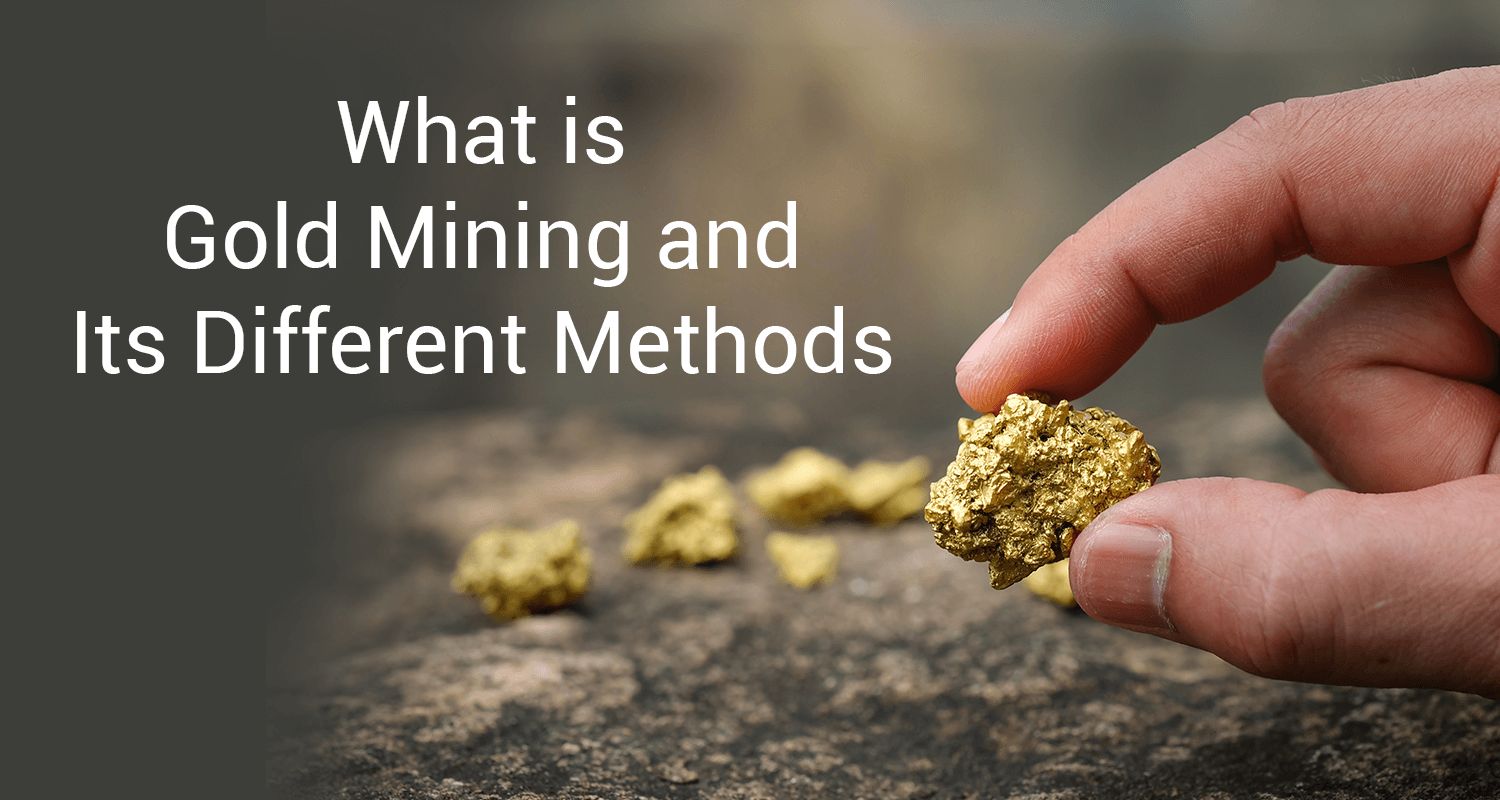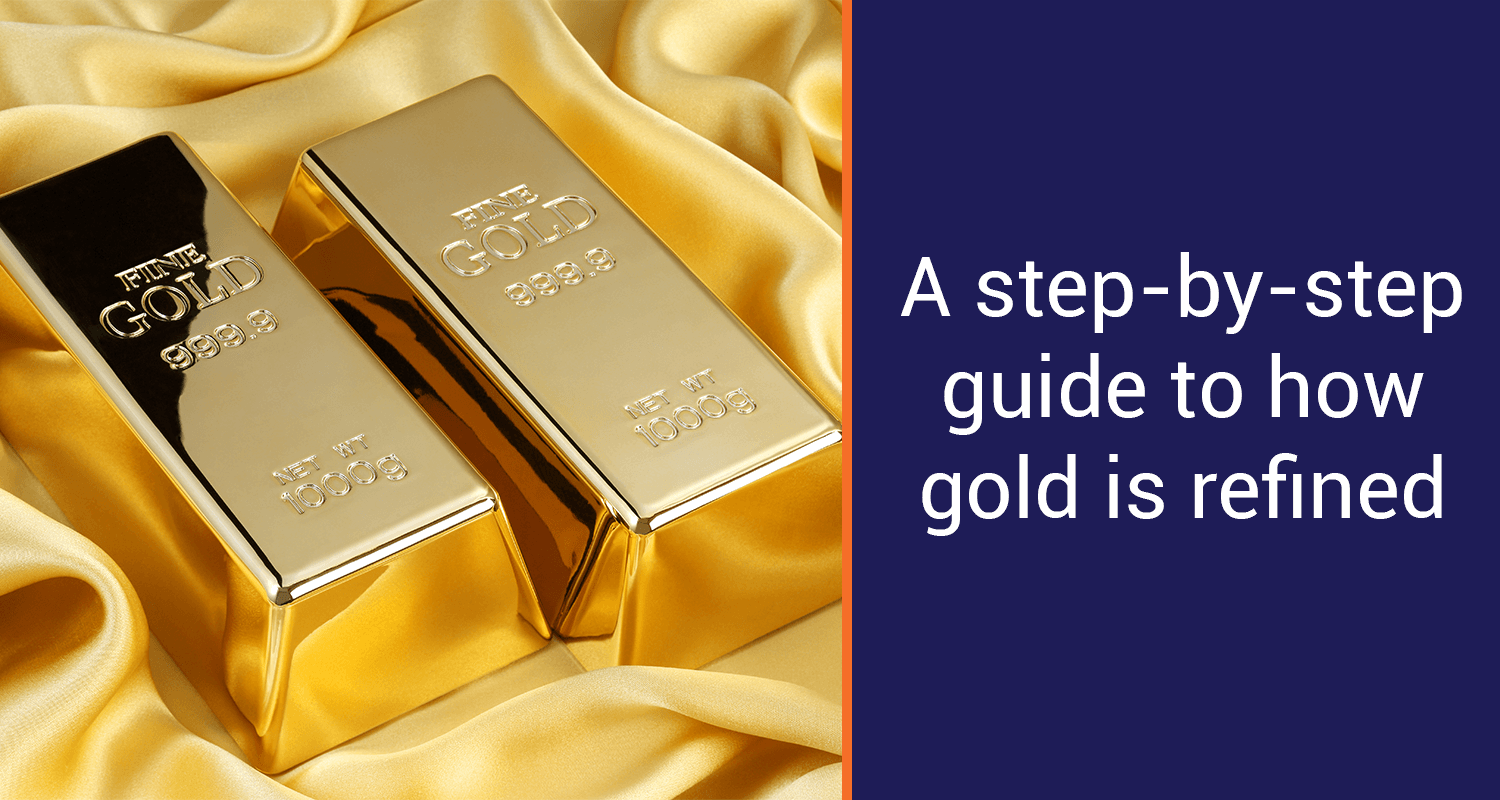Different Types of Gold Mining Methods

Gold, a rare commodity, has been considered one of the most precious and auspicious metals worldwide since ancient times. The process of extracting gold deposits in the raw form from the earth is known as gold mining. Gold deposits can be found in placer deposits such as rivers, streams, etc., or hard rock formations like quartz and ore bodies. Several methods and techniques are used to extract gold in raw form and convert it to usable form.
Lets look at what is gold mining, its availability in India and other regions of the world, and some of the methods of gold mining.
What is gold mining?
Gold mining is the process of extracting gold from the earth’s surface. Initially, geologists hunt for promising areas, then dig out the ore, which is basically the rock containing gold. The digging is done through open pits or tunnels. Next step is to separate the tiny gold flakes from the rest of the material. This procedure involves multiple steps like crushing, grinding, and even chemicals at times to get the gold to shed its rocky disguise. This gold concentrate is finally purified to obtain the shiny metal that we all know of.
Where can one find gold in India?
India is a land of diversity. Like its vast geographical territory in South Asia, with different cultures and languages spoken in various states, gold mining in India takes place in many regions with gold deposits from North India to South India. Sonbhadra district in Jharkhand, Nainital and Dehradun in Uttarakhand, and the Bhukia-Nagaur and the Khetri belts in Rajasthan are known for gold deposits in the North. On the other hand, gold bearing rocks are found in Kolar Gold Fields in Mysuru, Karnataka, and regions across Kerala. Chittoor district in Andhra Pradesh is also known for its gold deposits.
The central and various state governments are making efforts to increase domestic gold production and reduce dependencies on imports, either in raw form or final products. African countries like Ghana and South Africa were considered top gold producers until the mid-2000s. However, China, the U.S.A., and Russia surpassed them.
The few top countries currently producing gold on a large scale are China with 330 tonnes, Russia and Australia with 320 tonnes, Canada with 220 tonnes, the US with 170 tonnes, followed by Mexico, Kazakhstan, and so on.
Get Gold Loan at the comfort of your home
Apply NowTypes of gold mining
Several types of gold mining methods have been in use since ancient times. Some currently used methods to extract gold from the earth are:
- Placer Mining: One of the oldest methods of mining gold, placer mining involves extracting gold from placer deposits like sand, gravel, clay, etc. This method usually involves panning, sluicing, and using other simple equipment to separate gold from the surrounding material.
- Panning: The traditional method for extracting gold from loose materials like sand and gravel employs a wide, shallow pan filled with the potential gold-bearing material. The pan is submerged and swirled in water, which separates the lighter materials, such as rock, from gold. Since gold is significantly denser, it settles to the pan's bottom. This is a more manual method and panning material is obtained from specific locations like stream beds, inside turns where the water flow naturally slows down, allowing denser materials like gold to accumulate, bedrock shelf (solid rock underlying the streambed), where gold can concentrate due to its density.
- Hard Rock Mining: Hard rock mining involves extracting gold from solid rock formations with the help of technologies involving machinery. This method is more expensive but with better rewards.
- Hydraulic Mining: High-pressure water jets are used to dislodge and wash away sediment and rock material to expose gold-bearing deposits. This method causes significant environmental damage due to erosion and sedimentation and was commonly used during the California Gold Rush in the mid-1800s.
- Dredging: Floating machinery, such as dredges or suction dredges, extracts gold from underwater deposits. Dredging can mostly be used in rivers, streams, or offshore areas to access submerged gold deposits.
- Cyanide Leaching: One of the types of mining that uses chemical extraction, this method dissolves gold into cyanide solutions to extract gold from ores or tailings. This method is often used for extracting gold from large-scale mining operations and can be highly efficient. However, due to the toxicity of cyanide, it also carries risks of environmental damage.
- Mercury Amalgamation: This process of extracting gold involves using mercury to extract gold from ore by forming an amalgam with the gold. This method has been largely abandoned due to environmental concerns related to mercury pollution.
Due to its worldwide demand and long-term storage value, gold investment is considered a safe haven for investors with a low-risk appetite.
Types of Hard rock mining
Essentially there are two types of Hard rock mining.
Underground gold Mining
This method involves going deep beneath the earth’s surface. It requires highly skilled miners who have to navigate through tunnels and shafts to reach the hidden deposits. It’s a risky undertaking and not for the faint of heart. Controlled explosions and specialized drills are used to break up the ore-bearing rock. Next, it’s the job of the loaders to haul the previous ore to the earth’s surface.
Open-pit Gold Mining:
This mining usually takes place near the surface of the earth. Rather than miners, it uses the help of massive machines like excavators and dump trucks. Think of it like a giant excavation, leaving behind a vast scar on the landscape. It scoops out gold-bearing rocks (ores) under the open sky, hence the name. Although this method is less dangerous, it causes a significant amount of damage to the environment.
FAQs
Q1. What are the 4 steps of gold mining?Ans. The 4 steps of gold mining are:
- Exploration and Excavation - Geologists search for gold deposits on the surface or underground to extract the gold-containing rock (ore)
- Separation of Gold - The extracted ore is crushed and ground to smaller pieces
- Recovery of Gold - Chemicals are used to dissolve the gold particles so as to separate them from the unwanted rock material
- Purification of Gold - The gold-rich concentrate is further refined to obtain pure gold metal.
Ans. The 7 types of gold mining include:
- Placer Mining
- Panning
- Hard Rock Mining
- Hydraulic Mining
- Dredging
- Cyanide Leaching
- Mercury Amalgamation
Ans. The 5 different sages involved in mining are: Exploration, Discovery, Development, Production and Reclamation.
Get Gold Loan at the comfort of your home
Apply NowDisclaimer: The information contained in this post is for general information purposes only. IIFL Finance Limited (including its associates and affiliates) ("the Company") assumes no liability or responsibility for any errors or omissions in the contents of this post and under no circumstances shall the Company be liable for any damage, loss, injury or disappointment etc. suffered by any reader. All information in this post is provided "as is", with no guarantee of completeness, accuracy, timeliness or of the results etc. obtained from the use of this information, and without warranty of any kind, express or implied, including, but not limited to warranties of performance, merchantability and fitness for a particular purpose. Given the changing nature of laws, rules and regulations, there may be delays, omissions or inaccuracies in the information contained in this post. The information on this post is provided with the understanding that the Company is not herein engaged in rendering legal, accounting, tax, or other professional advice and services. As such, it should not be used as a substitute for consultation with professional accounting, tax, legal or other competent advisers. This post may contain views and opinions which are those of the authors and do not necessarily reflect the official policy or position of any other agency or organization. This post may also contain links to external websites that are not provided or maintained by or in any way affiliated with the Company and the Company does not guarantee the accuracy, relevance, timeliness, or completeness of any information on these external websites. Any/ all (Gold/ Personal/ Business) loan product specifications and information that maybe stated in this post are subject to change from time to time, readers are advised to reach out to the Company for current specifications of the said (Gold/ Personal/ Business) loan.



